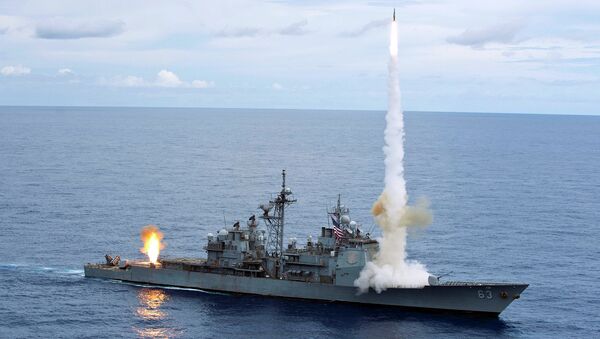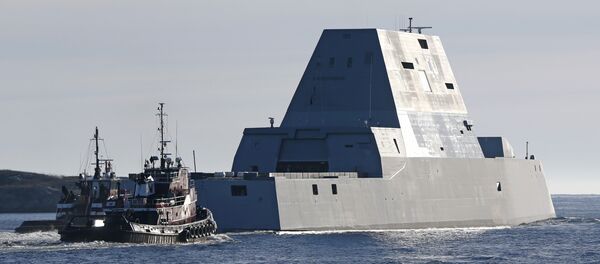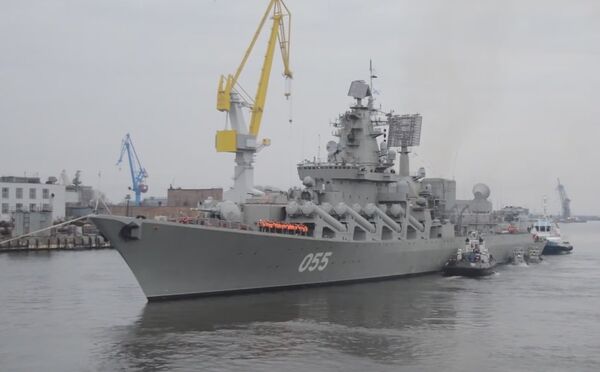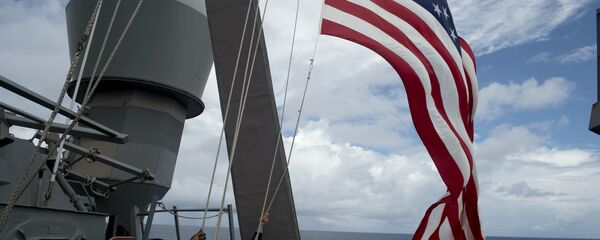The Ticonderoga-class ships have been in service since 1980, but even then they were already a somewhat aging design. With a hull design borrowed heavily from the then-new Spruance-class destroyers, the 9,800-ton ships became the first designed around cruise missile-based land strikes. However, the compact design resulting from their destroyer heritage has placed limitations on how much the ships can be modified, and how easily that is done.
Traditionally, cruisers have been the largest surface ships short of battleships, although the biggest cruisers have rivaled them in size, armament and deadliness to foes. The German Navy between the world wars famously got around naval treaties limiting the sizes of their ships by placing battleship guns on cruisers, for example, and the US' Alaska-class cruisers were big enough to be called "cruiser killers."
Destroyers, by comparison, have been assigned to defensive duties, providing fleet escort, anti-submarine and anti-air defenses for the main fleet, especially aircraft carriers. However, with the advent of missile cruisers and missile destroyers, these duties have largely overlapped to the point that distinguishing between the two classes is more of an academic exercise than a real summary of naval duties.
That said, the US Navy doesn't want to call what comes after the "Ticos'" retirement a cruiser. All they'll say is that it's going to be different — very different — from anything that exists now. According to the Navy's Chief of Naval Operations Director of Surface Warfare (or OPNAV N96), the replacement ship, which they hope to have by 2023 or 2024, will be big enough to accommodate future growth in weapons systems and sizes.
"People are always asking: ‘What's the next cruiser?'" Rear Admiral Ron Boxall told a crowd at the Surface Navy Association annual symposium back in January. "What I'm telling you is that it might not be a cruiser. What we are looking for is: what do we need our surface ships to do at the big level, what do we need to do at the small level, and what do we need to do with unmanned? Because it is a different Navy out there… And so we have to look at how we optimize our force inside surface warfare and then merge that outside of surface warfare with the other platforms and across all domains."
Defense News noted Monday that OPNAV has convened a "large surface combatant requirements evaluation team" to sort out what the new ship will look like and what it will need to do, so the service can be ready to begin the acquisition process, which Chief of Naval Operations Adm. John Richardson told Defense News in April he would "like to get… pretty well defined in the 2018, 2019 timeframe."
So what will the new ship, whatever it's classified as, need to do?
"You need something that can host the [size, weight, power and cooling], so it's probably going to be a little bigger," Boxall said. "Flexibility and adaptability, the ability to upgrade quickly, is going to be a key requirement capability. It's got to have room to grow."
The Navy's going to need room for bigger radars for air and missile defense; it's going to need bigger power plants "for directed energy, for rail guns and things like that," Boxall said, and it's going to need to be able to switch out its computers and consoles easily enough without having to cut holes in the hull to add and remove things. That's a major hurdle that limits what the Ticos can be asked to do, a consequence of being based on the hull of a smaller ship.
"We are going to need, we expect, space for longer range missiles," Baxall continued. "They are going to be bigger. So the idea that you could make a bigger cell, even if you don't use it for one big missile, you could use it for multiple missiles — quad-pack, eight-pack, whatever."
A useful point of comparison might be Soviet-era cruisers, since they also determined how and why the Ticos took the shape they did. Whereas the US Navy heavily prioritized aircraft carrier-centered strike groups, the Soviet Navy emphasized missile capabilities, equipping its cruisers with huge missile banks and, before the final few years of the Cold War, even putting them on its aircraft carriers. The plan was not to go toe-to-toe with American aircraft, but to knock out US fleets with a huge volume of missiles to overpower their defenses. As a consequence, the US invested all its blue water ships with extensive anti-air and anti-missile capabilities, meaning the Ticonderogas, despite being called cruisers and having the new AEGIS combat system to manage their offensive missiles, were still required to be capable of performing the same escort/protection duties as destroyers and frigates.
The new ship will be able to accomodate the Navy's new-found love for drones, too.
Bryan McGrath, a retired destroyer skipper and head of the defense consultancy The FerryBridge Group, told Defense News, "What is crucial to me is that, in addition to its size, sensors, and weapons, this ship must be able to one day accommodate several medium altitude long endurance [unmanned aerial vehicles] capable of dramatically extending both the sensor and weapons range of the ship."
"For the fleet concept of Distributed Maritime Operations to succeed, we have to break the reliance of distributed surface forces on external intelligence surveillance and reconnaissance sources. They need robust, organic ISR."
As far as design, Baxall said the ship will borrow from past lessons, including the modularity of the Spruance-class but also the innovations of the new Zumwalt-class destroyer.
Side by side the Burke look like a little frigate #navy pic.twitter.com/7xvfQmpabV
— Shadow of the Eagle (@clemente3000) March 26, 2018
"We looked at the things we already knew was out there," he told Defense News. "We looked at the [Zumwalt] hull — there are things about that we like, there are things we would do differently. There are things about DDG Flight III that we like," referring to the most recent version of the Arleigh Burke-class guided missile destroyer, "and things we don't like… So I think you are going to see a merge of different types of things… bigger than a DDG Flight III."









